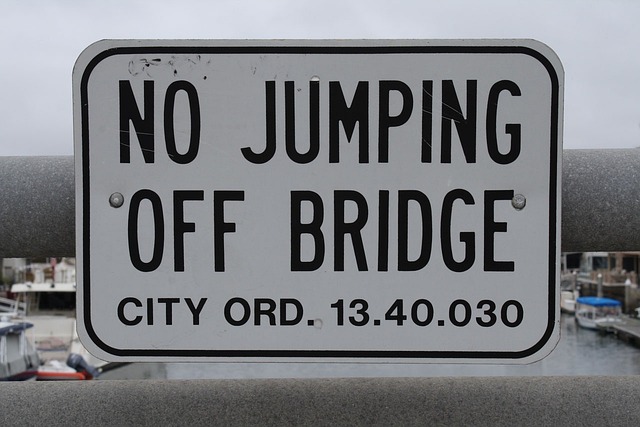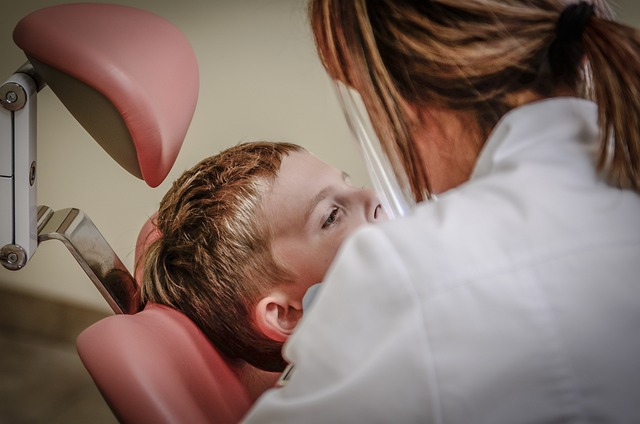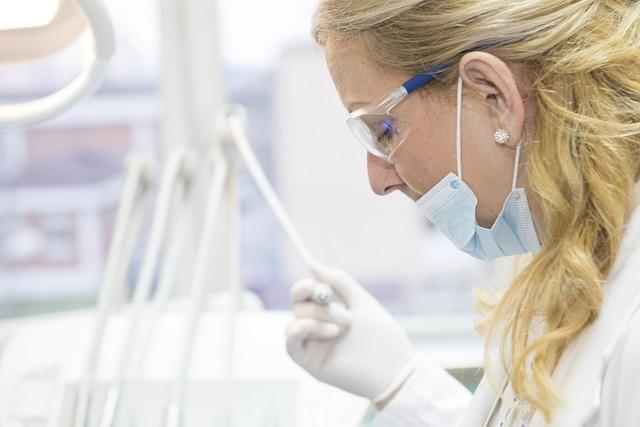Post Tooth Extraction: Enjoy Alfredo Pasta without Worry!
Post Tooth Extraction: Enjoy Alfredo Pasta without Worry!
Are you craving a delicious bowl of creamy Alfredo pasta but find yourself hesitating due to a recent tooth extraction? Don’t fret! We’re here to assure you that post tooth extraction doesn’t mean giving up your favorite meals. In this informative article, we’ll explore how you can satisfy your craving for Alfredo pasta while ensuring a comfortable recovery. So, put your worries aside and get ready to savor every delectable bite, knowing that you can still enjoy one of life’s tasty pleasures without compromising your dental health.
1. Understanding the importance of post tooth extraction care
After undergoing a tooth extraction, proper post-operative care is crucial for successful healing and to minimize any potential complications. By following these simple guidelines, you can ensure a smooth recovery and maintain good oral health:
- Manage pain and swelling: You may experience mild discomfort and swelling for a few days after the extraction. To alleviate these symptoms, take prescribed pain medications as directed by your dentist or use over-the-counter pain relievers like ibuprofen. Applying an ice pack on the affected area can also help reduce swelling.
- Maintain proper oral hygiene: Despite the sensitivity of the area, it’s important to keep your mouth clean to prevent infection. Gently brush your teeth twice a day, being careful to avoid the extraction site. Rinse your mouth with a saltwater solution (mix 1/2 teaspoon of salt in 8 ounces of warm water) after meals to promote healing.
- Avoid disturbing the extraction site: Allow the extraction site to heal undisturbed. Avoid touching the area with your tongue or fingers, and refrain from using a straw or smoking, as these actions can dislodge the blood clot and delay the healing process.
- Stick to soft foods: In the first few days following the extraction, eat soft or liquid foods that are gentle on the healing area. Avoid hard, chewy, or spicy foods that can irritate the extraction site.
Remember, every person’s recovery is unique, so it’s essential to consult your dentist for personalized advice. By prioritizing post tooth extraction care, you can ensure a speedy recovery and maintain optimal oral health in the long run.

2. Healing process after tooth extraction: What to expect
After a tooth extraction, understanding the healing process can help you know what to expect and how to take care of your mouth properly. It’s important to note that everyone’s healing process may vary, but here are some general guidelines to keep in mind:
- Bleeding: It’s normal to experience some bleeding for the first day or two after the extraction. To control bleeding, gently bite down on a clean piece of gauze placed over the extraction site, and replace it as needed. Avoid vigorous rinsing or spitting, as this can dislodge the blood clot.
- Swelling and bruising: Swelling and bruising around the extraction site are common. Applying an ice pack to the affected area in 10-minute intervals can help reduce swelling. Be sure to use a cloth or towel to protect the skin from direct contact with the ice.
- Pain: Some discomfort is to be expected after a tooth extraction. Your dentist may prescribe or recommend pain medications, and it’s crucial to follow their instructions. Over-the-counter pain relievers like ibuprofen can also be helpful, but always consult your dentist first.
- Activities and diet: Resting is essential for the healing process. Avoid strenuous activities for a few days and take it easy. Additionally, stick to a soft food diet during the first few days, gradually adding in solid foods as your mouth heals.
Remember, proper oral hygiene is crucial during the healing process. Brush your teeth gently, avoiding the extraction site, and rinse your mouth with a warm saltwater solution several times a day for the first few days. If you have any concerns or notice any unusual symptoms during the healing process, don’t hesitate to contact your dentist for guidance and reassurance.

3. Guidelines for a quick recovery following tooth extraction
To ensure a quick and smooth recovery after a tooth extraction, it is important to take proper care of the extraction site. Here are some guidelines to follow:
- Keep gentle pressure: After the extraction, place a clean gauze pad over the extraction site and bite down gently. Maintain this pressure for about 30 minutes to help stop any bleeding.
- Apply ice packs: It is normal to experience swelling and discomfort after an extraction. To reduce swelling, apply an ice pack wrapped in a thin cloth to the affected area for 10 minutes at a time. Take short breaks in between.
- Avoid rinsing or spitting: It is recommended to avoid rinsing your mouth or spitting forcefully for the first 24 hours following the extraction. This could dislodge the blood clot and hinder the healing process.
- Maintain oral hygiene: While avoiding the extraction site, continue brushing your teeth gently, preferably with a soft-bristle toothbrush. Be cautious not to brush directly on the extraction site.
To speed up your recovery further, follow these additional tips:
- Avoid smoking: Smoking can greatly impair the healing process, so refrain from smoking or using any tobacco products for at least 48 hours after the extraction.
- Stick to soft foods: Opt for a soft food diet for the first couple of days, including mashed potatoes, yogurt, smoothies, or soup. Chewing on the extraction site can delay healing.
- Take prescribed medications: If your dentist has prescribed any painkillers or antibiotics, make sure to follow the instructions carefully and complete the full course.
- Rest and relax: Give yourself time to rest and avoid strenuous activities for the first few days after the extraction. This helps your body focus on healing.

4. Foods to avoid after a tooth extraction: What’s on the avoid list?
After a tooth extraction, it’s crucial to be mindful of your diet to promote proper healing. While it’s important to stay nourished, there are certain foods that should be avoided during this time to prevent any complications. Here is a list of foods that you should stay away from in the days following your tooth extraction:
- Hard and crunchy foods: Avoid foods like popcorn, nuts, chips, and hard candies. These foods can easily get lodged in the extraction site or damage the blood clot forming there, leading to painful dry socket.
- Spicy and acidic foods: Curb your cravings for spicy foods and acidic condiments like tomato sauce and citrus fruits. These can irritate the surgical area and cause discomfort.
- Hot foods and beverages: It’s best to avoid consuming piping hot foods and beverages in the initial days after extraction. Heat can dissolve the blood clot, leading to bleeding and delayed healing.
Remember, a soft and gentle diet is the key to a smooth recovery. Focus on consuming foods that are easy to chew and swallow, and be sure to always follow your dentist’s post-extraction care instructions for a safe and speedy recovery.

5. Alfredo pasta: A delicious post-extraction meal option
If you’re looking for a tasty and satisfying meal after having a tooth extraction, why not indulge in a delicious plate of Alfredo pasta? Packed with creamy goodness and flavorful ingredients, this Italian classic can help make your recovery process more enjoyable.
Here’s why Alfredo pasta is a great option for your post-extraction meal:
- Soft and easy to chew: Since chewing can be challenging after a tooth extraction, the smooth and tender texture of Alfredo pasta ensures minimal discomfort while still providing a satisfying eating experience.
- Rich in calories and nutrients: Recovering from oral surgery demands extra energy and nutrients, and Alfredo pasta delivers both. The creamy sauce provides a good source of healthy fats, and you can easily add protein and vegetables to make it a complete and balanced meal.
- Quick and simple to prepare: When you’re not feeling your best, whipping up a meal may seem like a daunting task. Thankfully, Alfredo pasta is incredibly easy to make, and you can customize it with your favorite ingredients or even use pre-made sauces for added convenience.
- Enjoyable and satisfying: Comfort foods like Alfredo pasta can boost your mood and help alleviate any post-extraction discomfort or stress. Treating your taste buds to a scrumptious dish can make your recovery period a little brighter.
After a tooth extraction, take care not to overexert yourself while enjoying your meal. Follow any post-surgery instructions provided by your dentist, and consult with your healthcare professional if you have any concerns or specific dietary restrictions.
6. Benefits of enjoying Alfredo pasta during tooth extraction recovery
During the recovery period after a tooth extraction, it’s important to choose foods that are soft and easy to chew. Alfredo pasta can be an excellent option, providing both comfort and nourishment. Here are some benefits of enjoying Alfredo pasta during your tooth extraction recovery:
- Gentle on your healing gums: The creamy texture of Alfredo pasta makes it easy and gentle to chew, reducing irritation to your healing gums.
- Packed with protein: The dish typically contains chicken or shrimp, which are excellent sources of protein. Protein is crucial for tissue repair and supports the healing process after your extraction.
- Provides energy: Alfredo pasta contains carbohydrates that can provide you with a quick energy boost, which is beneficial during the recovery phase when your body requires additional resources for healing.
Moreover, the smooth and rich sauce of Alfredo pasta is not only satisfying but can also help alleviate any discomfort you may experience during the first few days after your tooth extraction. Remember to take small bites and chew slowly to ensure maximum enjoyment and to minimize any strain on your sensitive gums.
7. How to modify Alfredo pasta for a comfortable eating experience
Alfredo pasta is a delicious dish that many of us enjoy, but sometimes it can be a bit heavy to eat. Luckily, there are some simple modifications you can make to your Alfredo pasta to enhance your eating experience and make it more comfortable on your stomach.
- Choose a lighter pasta option: Instead of using traditional fettuccine noodles, opt for whole wheat or gluten-free pasta. These alternatives have a lighter texture and are easier to digest, ensuring you can enjoy your Alfredo pasta without feeling overly stuffed.
- Add vegetables for freshness: Incorporate colorful vegetables like broccoli, spinach, or cherry tomatoes into your Alfredo pasta. Not only will this add a burst of freshness and nutrition, but it will also help balance out the richness of the sauce, making it more pleasant to eat.
- Use low-fat milk or yogurt: For a lighter sauce, substitute some of the cream in your Alfredo recipe with low-fat milk or plain Greek yogurt. This simple swap will reduce the overall fat content while still maintaining a creamy and flavorful texture.
Incorporating these modifications will transform your Alfredo pasta into a more comfortable and enjoyable meal. By choosing a lighter pasta option, adding vegetables for freshness, and using low-fat milk or yogurt in the sauce, you can savor every bite without feeling weighed down. So go ahead and give these tweaks a try – your taste buds and stomach will thank you!
8. Nutritional value of Alfredo pasta during the healing phase
During the healing phase, it is crucial to consume foods that provide the necessary nutrients to aid in the recovery process. Alfredo pasta can be a nutritious option that can help your body heal and regain its strength. Here are some key nutritional values of Alfredo pasta:
- Protein: Alfredo pasta can be a source of protein, which is essential for tissue repair and muscle growth. It helps to rebuild damaged tissues and promote faster healing.
- Calcium: This pasta dish often contains Parmesan cheese, which is rich in calcium. Calcium is vital for bone strength and can aid in the healing of fractures or injuries.
- Vitamins: Pasta made from enriched wheat flour can provide essential vitamins like vitamin B complex, including niacin, thiamine, and riboflavin. These vitamins are crucial for energy production and supporting the healing process.
- Carbohydrates: Alfredo pasta is a carbohydrate-rich dish that can serve as an excellent source of energy during the healing phase. Carbohydrates fuel the body and allow it to function optimally.
Keep in mind that while Alfredo pasta can have nutritional benefits, it is essential to consume it in moderation and as part of a balanced diet. Adding protein-rich ingredients like grilled chicken or shrimp, and incorporating vegetables can enhance the overall nutritional value of the dish. Consult with a healthcare professional or nutritionist for personalized nutritional advice during your healing phase.
9. Tooth extraction recovery tips: Savoring Alfredo pasta without worry
Recovering from a tooth extraction doesn’t mean you have to give up enjoying your favorite foods. With a little care and consideration, you can still savor dishes like delicious Alfredo pasta without worrying about harming your healing gums. Here are some useful tips to keep in mind:
- Choose a soft pasta: Opt for a softer pasta variety, such as fettuccine or penne, that requires less chewing. This will help minimize any discomfort or irritation to your extraction site.
- Cut the pasta into smaller pieces: Before digging into your plate of Alfredo goodness, use a knife to cut the pasta into manageable, bite-sized pieces. This will make it easier to chew and reduce the risk of accidentally biting down on the extraction area.
- Ensure your pasta is well-cooked: Overcook your pasta slightly to make it softer and smoother. This will make it gentler on your mouth and easier to chew without causing any unnecessary strain on your healing gums.
Remember to take small bites, chew slowly and carefully, and avoid using the side of your mouth where the extraction took place. By following these simple tips, you can continue to enjoy your favorite dishes while allowing your mouth to heal properly.
10. Delicious alternatives to Alfredo pasta during the healing period
When going through a healing period, it’s important to nourish your body with nutritious and delicious meals. While traditional Alfredo pasta may not be the best option for your recovery, there are plenty of mouth-watering alternatives to satisfy your pasta cravings. Whether you’re following a specific diet or looking for lighter options, we’ve got you covered.
1. Vegetable Noodles: Swap out traditional pasta for veggie noodles made from zucchini, carrots, or sweet potatoes. These low-carb alternatives are packed with vitamins and minerals, and can be easily created using a spiralizer or vegetable peeler.
2. Quinoa Pasta: If you’re looking for a gluten-free option, quinoa pasta is an excellent alternative. Made from nutrient-dense quinoa flour, this pasta is not only delicious but also boasts a higher protein content compared to traditional varieties.
Frequently Asked Questions
Q: What is the article about?
A: The article provides information and tips on enjoying Alfredo pasta after a tooth extraction without any concerns.
Q: How should I approach eating Alfredo pasta after a tooth extraction?
A: It is important to wait until the initial healing period is complete, usually about 24 to 48 hours after the extraction. Once cleared by your dentist, you can gradually introduce soft, creamy foods like Alfredo pasta into your diet.
Q: Why is Alfredo pasta a good choice after a tooth extraction?
A: Alfredo pasta is a great option because it is soft and easy to chew, which minimizes the potential discomfort or harm to the extraction site.
Q: Can I consume Alfredo pasta immediately after the tooth extraction?
A: No, it is advised to wait until the initial healing period is over before consuming any solid or semi-solid foods, including Alfredo pasta. This allows the blood clot to form and the extraction site to heal properly.
Q: What precautions should I take while eating Alfredo pasta after a tooth extraction?
A: Be sure to chew slowly and carefully, ensuring that you don’t bite down directly on the extraction site. It’s also recommended to cut the noodles into smaller pieces to make them easier to chew.
Q: Are there any specific ingredients in Alfredo pasta that could cause discomfort?
A: Some individuals may experience sensitivity to dairy products, so if you are sensitive to dairy or have any known food allergies, you might want to avoid Alfredo pasta or opt for a lactose-free or vegan alternative.
Q: How can I make the Alfredo pasta easier to eat?
A: You can make your Alfredo pasta softer and easier to eat by cooking the noodles slightly longer than usual. This will result in a more tender texture, making it easier for you to enjoy without causing any harm to your extraction site.
Q: Are there any other food options I should avoid after a tooth extraction?
A: It is recommended to avoid hard, crunchy, or sticky foods until the extraction site has fully healed. This includes items like chips, nuts, and chewy candies.
Q: How can I manage any discomfort while eating Alfredo pasta after a tooth extraction?
A: If you experience any discomfort, try rinsing your mouth with saltwater before and after eating to reduce inflammation. Over-the-counter pain relievers or prescribed medications suggested by your dentist can also help alleviate any pain.
Q: When should I consult a dentist if I experience ongoing discomfort or complications?
A: If you experience severe, prolonged pain, ongoing bleeding, infection symptoms (such as fever or pus), or any other concerns, it is important to contact your dentist immediately for further evaluation and guidance.
Conclusion
In conclusion, post tooth extraction doesn’t mean the end of enjoying your favorite foods. With proper care and following a few simple guidelines, you can indulge in delicious Alfredo pasta without a worry. Remember to wait for the appropriate healing time, maintain good oral hygiene, and avoid any potential irritants. And when you finally savor that creamy, cheesy Alfredo goodness, take a moment to appreciate the resilience of your smile. So go ahead, treat yourself to a comforting bowl of Alfredo pasta and relish in the joy of taste, knowing that your post tooth extraction journey can still be full of culinary delights. Bon appétit and happy healing!






